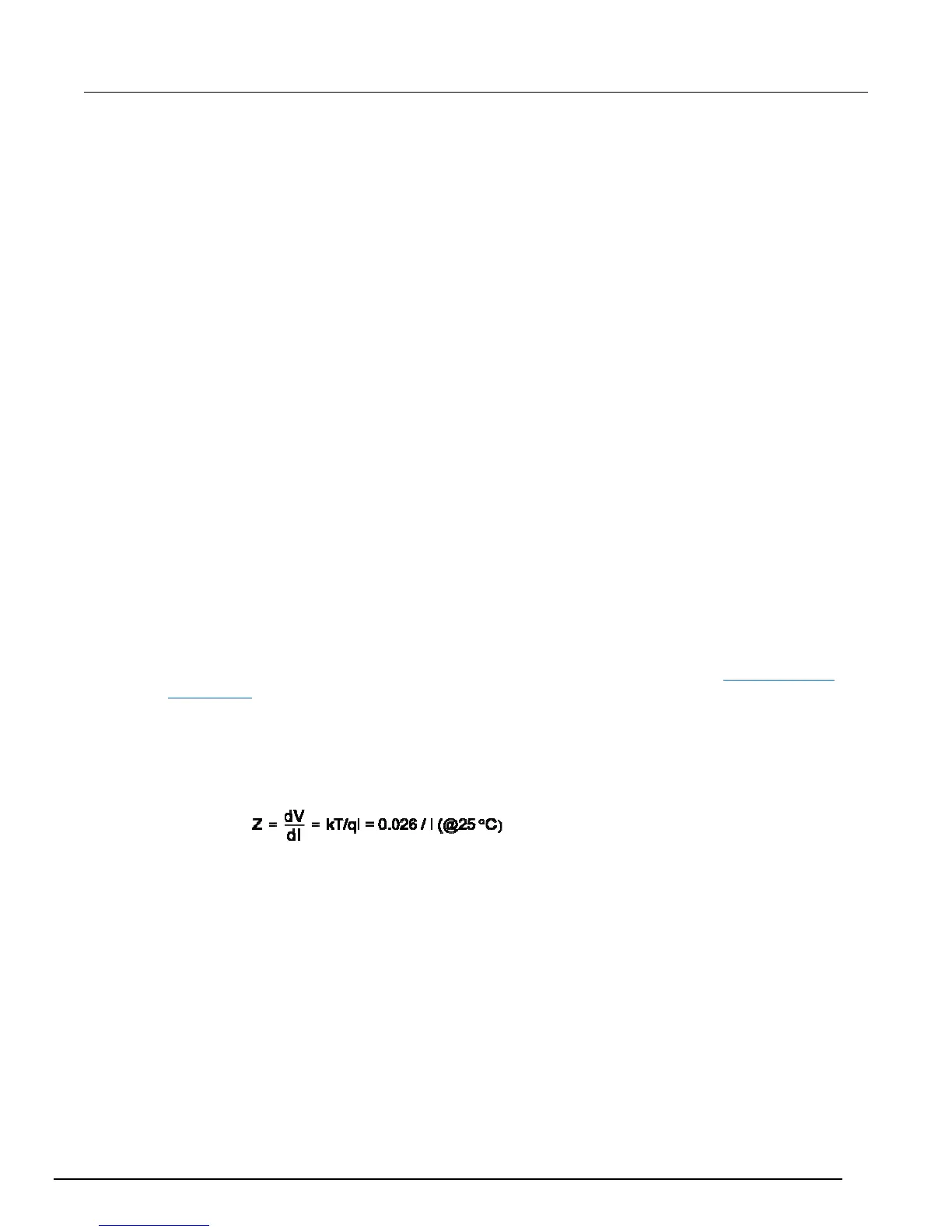Model 6517B Electrometer Reference Manual Section 5: Measurement options
6517B-901-01 Rev. C / August 2015 5-15
Logarithmic currents
The use of a diode junction in the external feedback path permits a logarithmic current-to-voltage
conversion. This relationship for a junction diode is given by the equation:
V = mkT / q ln(I/I
O
) + I
RB
Where:
q = unit of charge (1.6022 10
-19
)
k = Boltzmann’s constant (1.3806 10
-23
)
T = temperature (K).
The limitations in this equation center on the factors I
O
, m, and RB. I
O
is the extrapolated current for
V
O
. An empirical proportional constant, m, accounts for the different character current conduction
(recombination and diffusion mechanisms) within the junction, typically varying between 1 and 2.
Finally, RB constitutes the ohmic bulk resistance of the diode junction material. IO and RB limit the
usefulness of the junction diode at low and high currents respectively. The factor m introduces
nonlinearities between those two extremes. Because of these limitations, most diodes have a limited
range of logarithmic behavior.
A solution to these constraints is to use a transistor configured as a "transdiode" in the feedback path,
as shown in in the figure below. Analyzing the transistor in this configuration leads to the relationship:
V = kT/q[ln(I/I
O
) - ln(h
FE
/(1 + h
FE
))]
where:
h
FE
is the current gain of the transistor
From this equation, proper selection of Q1 would require a device with high current gain (h
FE
), which
is maintained over a wide range of emitter currents. Suitable devices for this application include
Analog Devices AD812 and Precision Monolithics MAT-01. Use the enclosure in Shielded fixture
construction (on page 5-13) to shield the device.
Frequency compensation/stabilization is accomplished by adding a feedback capacitor, C
FB
. The
value of this capacitor depends on the particular transistor being used and the maximum current level
expected. Compensation at maximum current is required because the dynamic impedance is minimal
at this point. It should be noted that the response speed at lower currents is compromised due to the
increasing dynamic impedance, which is given by the following formula:

